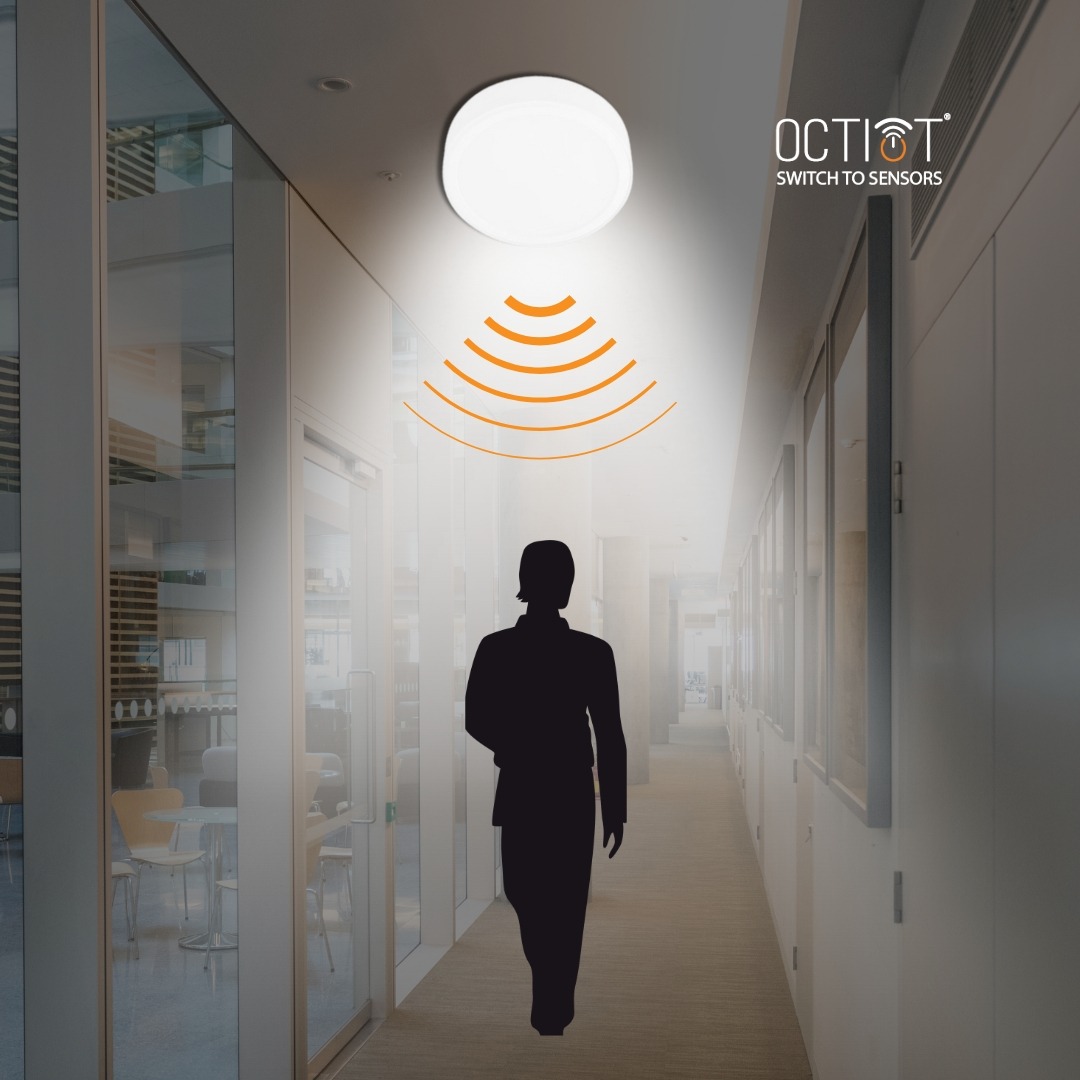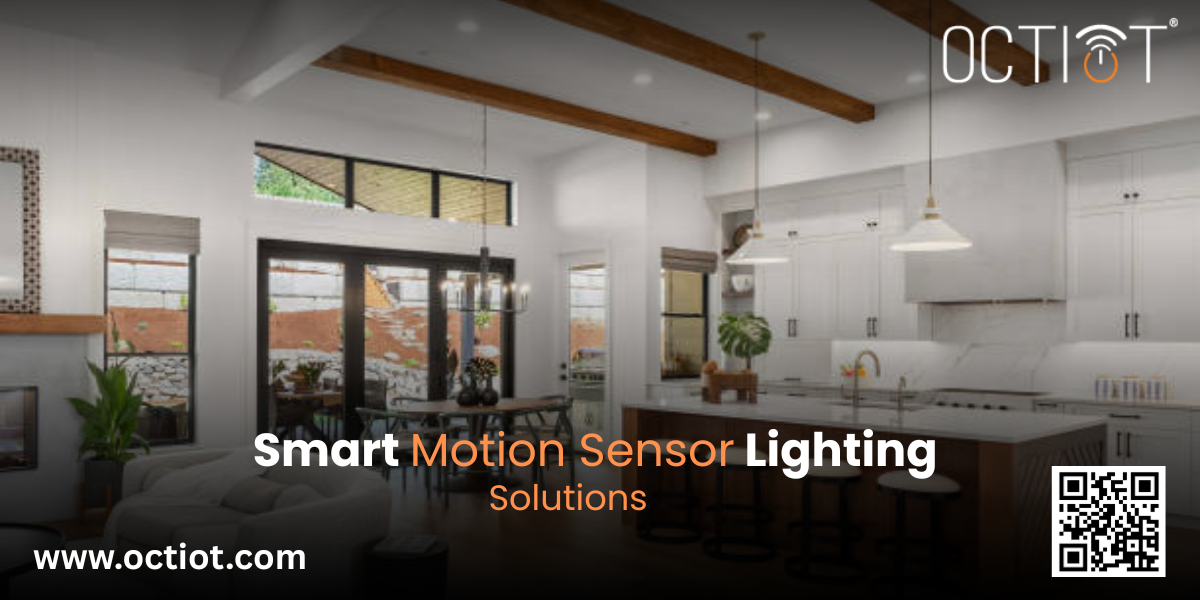Motion Sensor LED Light
Motion sensor LED lights, such as the OCTIOT Motion Sensor LED Light, are revolutionizing the way we illuminate our homes. These innovative lights utilize advanced sensor technology to automatically detect motion and provide illumination when needed. But how exactly do they work?
- Sensor Detection: Motion sensor LED lights are equipped with built-in sensors that can detect movement within a specific range. These sensors use various technologies, such as passive infrared (PIR) sensors, microwave sensors, or a combination of both, to detect changes in the surrounding environment.
- Activation and Illumination: When motion is detected, the motion sensor LED light instantly activates and provides illumination. The light may turn on at full brightness or gradually increase its intensity, depending on the model. This allows for seamless lighting transitions and avoids sudden brightness that can be discomforting to the eyes.
- Duration and Dimming: Once motion is no longer detected within the range of the sensor, the motion sensor LED light will either turn off after a specified period of time or gradually dim to conserve energy. This feature ensures that the light is only active when needed, preventing unnecessary energy consumption and extending the lifespan of the light.
Motion sensor LED light for home are designed to be highly sensitive, accurately detecting even the slightest movement. This makes them an ideal lighting solution for various areas in your home, offering convenience, energy efficiency, and enhanced safety.
Benefits of using motion sensor LED lights
There are numerous advantages to incorporating motion sensor LED lights into your home lighting system. Let’s explore some of the key benefits:
- Energy Efficiency: Motion sensor LED lights are incredibly energy-efficient. They only activate when motion is detected, eliminating the need for manual switch operation and reducing energy wastage. Additionally, LED technology itself is highly efficient, consuming significantly less energy compared to traditional incandescent or fluorescent bulbs.
- Cost Savings: By reducing energy consumption, motion sensor LED lights can help lower your electricity bills. Since they automatically turn off when no motion is detected, you won’t have to worry about leaving lights on when you’re not in the room. This can result in substantial cost savings over time.
- Extended Lifespan: LED lights are known for their long lifespan. By using motion sensor LED lights, you can further extend their lifespan since they are not constantly on. This means fewer bulb replacements and less waste.
- Convenience: Motion sensor LED lights offer unparalleled convenience. Imagine walking into a dark room and having the lights automatically turn on as you enter. No more fumbling for light switches or stumbling around in the dark. Motion sensor lights provide instant illumination when and where you need it.
- Enhanced Safety and Security: Motion sensor LED lights can greatly enhance safety and security in and around your home. They can act as a deterrent for potential intruders by automatically illuminating the area when motion is detected. Additionally, they provide a well-lit environment, reducing the risk of accidents or tripping hazards in poorly lit areas.
6. Versatility: Motion sensor LED lights come in a variety of styles and designs, making them suitable for any space in your home. Whether you need them for outdoor security lighting, hallway illumination, or closet lighting, there’s a motion sensor LED light that can meet your specific needs
By incorporating motion sensor LED lights into your home, you can enjoy the benefits of energy efficiency, cost savings, convenience, enhanced safety, and versatility.
Types of motion sensor LED lights
There are different types of motion sensor LED lights available in the market, each with its own unique features and applications. Let’s explore some of the common types:
- Passive Infrared (PIR) Sensors: PIR sensors are the most commonly used sensors in motion sensor LED lights. They detect changes in heat signatures and movement within their range. When a person or object moves within the sensor’s field of view, it triggers the light to turn on.
- Microwave Sensors: Microwave sensors emit continuous microwave signals and detect any changes in the reflected signals caused by moving objects. These sensors are highly sensitive and can detect motion through walls and other obstacles. However, they are more expensive than PIR sensors and consume more energy.
- Dual Technology Sensors: Dual technology sensors combine both PIR and microwave technologies to provide highly accurate motion detection. These sensors offer increased reliability by minimizing false triggers. They typically require both heat and movement to activate the light, making them ideal for areas where false alarms are a concern.
- Ultrasonic Sensors: Ultrasonic sensors emit high-frequency sound waves and detect changes in the reflected waves caused by moving objects. These sensors are particularly effective at detecting small movements and are commonly used in security applications.
- Light Sensors: Some motion sensor LED lights also incorporate light sensors, which allow the light to activate only in low-light conditions. This feature ensures that the light is only active when it is needed, further enhancing energy efficiency.
It’s important to consider the specific requirements of your space and the intended application when choosing the type of motion sensor LED light that best suits your needs.
Factors to consider when choosing motion sensor LED lights
When selecting motion sensor LED lights for your home, there are several factors to consider to ensure you choose the right product. Let’s explore some of these factors:
- Detection Range: The detection range of the motion sensor LED light is an important factor to consider. It determines the distance within which the sensor can detect motion. Consider the size of the area you want to illuminate and choose a light with an appropriate detection range.
- Sensitivity Adjustment: Look for motion sensor LED lights that offer adjustable sensitivity settings. This allows you to customize the level of sensitivity based on the specific requirements of the area. For example, you may want a higher sensitivity setting for outdoor security lighting and a lower sensitivity setting for indoor hallway lighting.
- Angle of Detection: The angle of detection refers to the field of view of the motion sensor. Consider the coverage area you need and choose a light with a suitable detection angle. Adjustable angle options can provide more flexibility in directing the light where it’s needed.
- Duration Control: Some motion sensor LED lights allow you to adjust the duration for which the light remains on after motion is detected. This feature is particularly useful in areas where you may need extended illumination, such as driveways or outdoor seating areas.
- Dimming Functionality: Consider whether you want motion sensor LED lights that offer dimming functionality. Dimmable lights provide a softer and more ambient lighting experience, especially during nighttime or in areas where bright light may be undesirable.
- Power Source: Motion sensor LED lights can be battery-powered or wired. Battery-powered lights offer flexibility in terms of placement and are easier to install. However, they require regular battery replacements. Wired lights, on the other hand, provide a continuous power source but may require professional installation.
By considering these factors, you can ensure that you choose motion sensor LED lights that are perfectly suited to your specific lighting needs and preferences.
Installation and placement of motion sensor LED lights
Installation of motion sensor LED lights is typically quick and hassle-free, requiring minimal tools and expertise. Here are some general guidelines for installation and placement:
- Determine the Placement: Identify the areas in your home where motion sensor LED lights would be most beneficial. Common areas include hallways, staircases, bathrooms, closets, and outdoor entrances.
- Mounting Options: Motion sensor LED lights can be mounted using screws, adhesive strips, or magnetic attachments, depending on the design. Follow the manufacturer’s instructions for the specific mounting method recommended for your light.
- Height and Angle: Consider the optimal height and angle for the motion sensor LED light. For indoor lights, a height of around 6-8 feet above the floor is generally recommended. Adjust the angle of the light to ensure maximum coverage of the desired area.
- Avoid Obstructions: Ensure that there are no obstructions, such as furniture or plants, in the line of sight of the motion sensor. Obstructions can hinder the sensor’s ability to detect motion accurately.
- Outdoor Considerations: If installing motion sensor LED lights outdoors, select lights specifically designed for outdoor use. Ensure that the lights are weatherproof and capable of withstanding the elements. Consider the range and sensitivity settings to prevent false triggers caused by small animals or moving branches.
- Test and Adjust: After installation, test the motion sensor LED light to ensure it activates and illuminates as expected. Make any necessary adjustments to the placement, height, angle, or sensitivity settings to achieve optimal performance.
Proper installation and placement of motion sensor LED lights can maximize their effectiveness and ensure that they provide the desired lighting experience in your home.
Conclusion
Motion sensor LED lights, such as the OCTIOT Motion Sensor LED Light, provide a multitude of benefits for homeowners. From energy efficiency and cost savings to convenience and enhanced safety, these lights offer a practical and modern lighting solution for both indoor and outdoor spaces.
By intelligently detecting motion and providing illumination when needed, motion sensor LED lights eliminate the need for manual switch operation and prevent energy wastage. With their advanced sensor technology, these lights ensure optimal functionality, accurately detecting movement and adjusting illumination accordingly.
When choosing motion sensor LED lights, consider factors such as detection range, sensitivity adjustments, angle of detection, duration control, and power source. Proper installation and placement are crucial to maximize the effectiveness of the lights and ensure they provide the desired lighting experience.
Whether used for security, pathway lighting, or indoor convenience, motion sensor LED lights are versatile and adaptable to various applications. They offer a touch of luxury and modernity to your home, enhancing safety, conserving energy, and providing a seamless lighting experience.
Experience the convenience and efficiency of motion.
Contact us: 088600 12342
For more information: sales@octiot.com





2 Comments
Thanks for fantastic info I was looking for this info for my mission.
INDUSTRIAL MOTION SENSOR BASE LED TUBE LIGHT FITTING 4FEET 20 WATT 220V IP65 WITH 20 TO 25% DIMMING–FEATURE ON 30 SEC. BURNING LIFE 50000 HRs…..20NOS